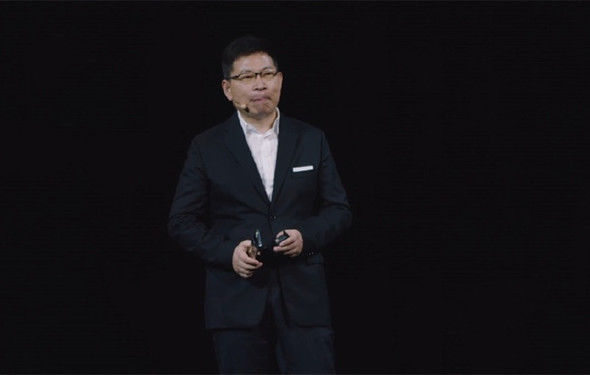java开发RocketMQ生产者高可用示例详解
目录
- 引言
- 1 消息
- 1.1 topic
- 1.2 Body
- 1.3 tag
- 1.4 key
- 1.5 延迟级别
- 2 生产者高可用
- 2.1 客户端保证生产者高可用
- 2.1.1 重试机制
- 2.1.2 客户端容错
- 2.2 Broker端保证生产者高可用
引言 前边两章说了点基础的,从这章开始,我们挖挖源码。看看RocketMQ是怎么工作的。
首先呢,这个生产者就是送孩子去码头的家长,孩子们呢,就是消息了。
我们看看消息孩子们都长啥样。
1 消息
public class Message implements Serializable {private static final long serialVersionUID = 8445773977080406428L; //主题名字private String topic; //消息扩展信息,Tag,keys,延迟级别都存在这里private Map properties; //消息体,字节数组private byte[] body; //设置消息的key,public void setKeys(String keys) {}//设置topicpublic void setTopic(String topic) {}//延迟级别public int setDelayTimeLevel(int level) {}//消息过滤的标记public void setTags(String tags) {}//扩展信息存放在此public void putUserProperty(final String name, final String value) {}}
消息就是孩子们,这些孩子们呢,有各自的特点,也有共性。同一个家长送来的两个孩子可以是去同一个地方的,也可以是去不同的地方的。
1.1 topic
首先呢,每个孩子消息都有一个属性topic,这个我们上文说到了,是一个候船大厅。孩子们进来之后,走到自己指定的候船大厅的指定区域(平时出门坐火车高铁不也是指定的站台乘车么),坐到message queue座位上等,等着出行。
Broker有一个或者多个topic,消息会存放到topic内的message queue内,等待被消费。
1.2 Body
孩子消息,也有一个Body属性,这就是他的能力,他会画画,他会唱歌,他会干啥干啥,就记录在这个Body属性里。等走出去了,体现价值的地方也是这个Body属性。
Body就是消息体,消费者会根据消息体执行对应的操作。
1.3 tag
这个tag我们上节说了,就是一个标记,有的孩子背着画板,相机,有的游船就特意找到这些孩子拉走,完成他们的任务。
可以给消息设置tag属性,消费者可以选择含有特定tag属性的消息进行消费。
1.4 key
key就是每个孩子消息的名字了。要找哪个孩子,喊他名就行。
对发送的消息设置好 Key,以后可以根据这个Key 来查找消息。比如消息异常,消息丢失,进行查找会很方便。
1.5 延迟级别
当然,还有的孩子来就不急着走,来之前就想好了,要恰个饭,得30分钟,所以自己来了会等30分钟后被接走。
设置延迟级别可以规定多久后消息可以被消费。
2 生产者高可用 每个送孩子来的家长都希望能送到候船大厅里,更不希望孩子被搞丢了,这个时候这个候船大厅就需要一些保证机制了。
2.1 客户端保证生产者高可用
2.1.1 重试机制 就是说家长送来了,孩子进到候船大厅之后,没能成功坐到message queue座位上,这个时候工作人员会安排重试,再去看是否有座位坐。重试次数默认是2次,也就是说,消息孩子共有3次找座位坐的机会。
看源码,我特意加了注解,大致可以看懂一些了。
//这里取到了重试的次数int timesTotal = communicationMode == CommunicationMode.SYNC ? 1 + this.defaultMQProducer.getRetryTimesWhenSendFailed() : 1; int times = 0; String[] brokersSent = new String[timesTotal]; for (; times < timesTotal; times++) {String lastBrokerName = null == mq ? null : mq.getBrokerName(); //获取消息队列MessageQueue mqSelected = this.selectOneMessageQueue(topicPublishInfo, lastBrokerName); if (mqSelected != null) {mq = mqSelected; brokersSent[times] = mq.getBrokerName(); try {beginTimestampPrev = System.currentTimeMillis(); if (times > 0) {//Reset topic with namespace during resend.msg.setTopic(this.defaultMQProducer.withNamespace(msg.getTopic())); }long costTime = beginTimestampPrev - beginTimestampFirst; if (timeout < costTime) {callTimeout = true; break; }//发送消息sendResult = this.sendKernelImpl(msg, mq, communicationMode, sendCallback, topicPublishInfo, timeout - costTime); ...} catch (RemotingException e) {...continue; } catch (MQClientException e) {...continue; } catch (MQBrokerException e) {...continue; } catch (InterruptedException e) {//可以看到只有InterruptedException抛出了异常,其他的exception都会继续重试throw e; }} else {break; }}
重试代码如上,这个
sendDefaultImpl方法中,会尝试发送三次消息,若是都失败,才会抛出对应的错误。2.1.2 客户端容错 若是有多个Broker候车大厅的时候,服务人员会安排消息孩子选择一个相对不拥挤,比较容易进入的来进入。当然那些已经关闭的,停电的,没有服务能力的,我们是不会进的。
MQ Client会维护一个Broker的发送延迟信息,根据这个信息会选择一个相对延迟较低的Broker来发送消息。会主动剔除哪些已经宕机,不可用或发送延迟级别较高的Broker.
选择
Broker就是在选择message queue,对应的代码如下:这里会先判断延迟容错开关是否开启,这个开关默认是关闭的,若是开启的话,会优先选择延迟较低的Broker。
public MessageQueue selectOneMessageQueue(final TopicPublishInfo tpInfo, final String lastBrokerName) {//判断发送延迟容错开关是否开启if (this.sendLatencyFaultEnable) {try {//选择一个延迟上可以接受,并且和上次发送相同的Brokerint index = tpInfo.getSendWhichQueue().incrementAndGet(); for (int i = 0; i < tpInfo.getMessageQueueList().size(); i++) {int pos = Math.abs(index++) % tpInfo.getMessageQueueList().size(); if (pos < 0)pos = 0; MessageQueue mq = tpInfo.getMessageQueueList().get(pos); //若是Broker的延迟时间可以接受,则返回这个Brokerif (latencyFaultTolerance.isAvailable(mq.getBrokerName()))return mq; }//若是第一步没能选中一个Broker,就选择一个延迟较低的Brokerfinal String notBestBroker = latencyFaultTolerance.pickOneAtLeast(); int writeQueueNums = tpInfo.getQueueIdByBroker(notBestBroker); if (writeQueueNums > 0) {final MessageQueue mq = tpInfo.selectOneMessageQueue(); if (notBestBroker != null) {mq.setBrokerName(notBestBroker); mq.setQueueId(tpInfo.getSendWhichQueue().incrementAndGet() % writeQueueNums); }return mq; } else {latencyFaultTolerance.remove(notBestBroker); }} catch (Exception e) {log.error("Error occurred when selecting message queue", e); }//若是前边都没选中一个Broker,就随机选一个Brokerreturn tpInfo.selectOneMessageQueue(); }return tpInfo.selectOneMessageQueue(lastBrokerName); }
但是当延迟容错开关为关闭状态的时候,执行的代码如下:
为了均匀分散Broker的压力,会选择与之前不同的Broker。
public MessageQueue selectOneMessageQueue(final String lastBrokerName) {//若是没有上次的Brokername做参考,就随机选一个if (lastBrokerName == null) {return selectOneMessageQueue(); } else {//如果有,那么就选一个其他的Brokerfor (int i = 0; i < this.messageQueueList.size(); i++) {int index = this.sendWhichQueue.incrementAndGet(); int pos = Math.abs(index) % this.messageQueueList.size(); if (pos < 0)pos = 0; MessageQueue mq = this.messageQueueList.get(pos); //这里判断遇上一个使用的Broker不是同一个if (!mq.getBrokerName().equals(lastBrokerName)) {return mq; }}//若是上边的都没选中,那么就随机选一个return selectOneMessageQueue(); }}
2.2 Broker端保证生产者高可用
【java开发RocketMQ生产者高可用示例详解】Broker候船大厅为了能确切的接收到消息孩子,至少会有两个厅,一个主厅一个副厅,一般来说孩子都会进入到主厅,然后一顿操作,卡该忙信那机资(影分身之术),然后让分身进入到副厅,这样当主厅停电了,不工作了,副厅的分身只要去完成了任务就ok的。一般来说都是主厅的消息孩子去坐船完成任务。
之后我们会聊到Broker的主从复制,分为同步复制和异步复制,同步复制时指当master 收到消息之后,同步到slaver才算消息发送成功。异步复制是只要master收到消息就算成功。生产中建议至少部署两台master和两台slaver。
下一篇,我们聊聊,消息的发送流程,就是说,一个消息孩子,从进码头的门到坐到message queue座位上,都经历了啥。
以上就是java开发RocketMQ生产者高可用示例详解的详细内容,更多关于java RocketMQ生产者高可用的资料请关注脚本之家其它相关文章!
推荐阅读
- Monaco|Monaco Editor实现sql和java代码提示实现示例
- 最新SpringCloud+SpringCloudAlibaba视频教程,Java自学/进阶程序员必看!
- Serverless 架构下的 AI 应用开发
- iOS开发之数据库更新成功|iOS开发之数据库更新成功,表格数据无更新问题
- java|银行科技岗是程序员比较好的就业选择么()
- java|去银行写代码是什么体验()
- Instruments|Instruments 之 Memory
- @Temporal|@Temporal 注解使用
- Pygame游戏开发之太空射击实战盾牌篇
- uniApp的学习开发小程序(三)路由跳转和页面跳转及应用生命周期










